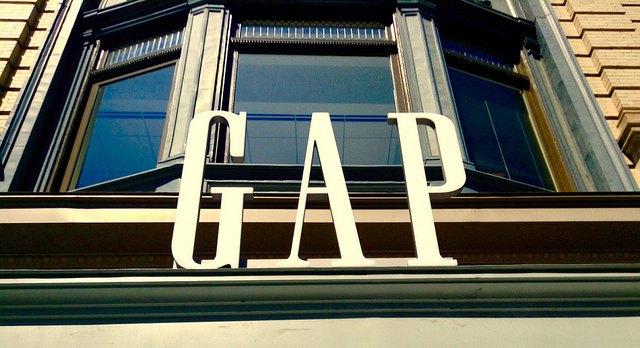
Gap, Inc. just set an ambitious climate change target: The clothing retailer wants to cut its absolute greenhouse gas emissions in half by the end of 2020, using last year as a baseline. Reduction efforts will occur at all of its owned and operated facilities around the world.
For a major global clothing retailer with 2014 net sales totaling $16.4 billion, that is a goal that is commendable. Consider that Gap’s products are sold in over 90 countries through 3,330 company-owned stores and more than 400 franchise stores, plus online sites.
The goal, announced as part of the company's latest sustainability report, builds on past efforts. Gap achieved and then exceeded its previous goal to reduce GHG emissions across its U.S. operations by 20 percent by 2015, compared to a 2008 baseline. The company reported that it reduced GHG emissions by 33 percent between 2008 and the end of last year.
Gap first set a GHG-reduction goal in 2003 with an 11 percent reduction in energy use per square foot across its U.S. operations. It was a goal the retailer also exceeded with a 20 percent reduction.
One way that Gap has managed to continually exceed GHG goals is by installing LED lighting and smart thermostats. Lighting is, of course, required for its stores and distribution centers to function, and LED lights use 80 percent less energy than conventional lights. Plus, they last five to 10 times longer, are much brighter, and pay for themselves in two to three years.
Gap has already installed LED lights at more than 30 percent of its U.S. stores, and the switch is paying dividends. For example, at its distribution center in Fresno, California, the company found 90 improvement opportunities and reduced energy use by 17 percent and operating costs by 30 percent. The company has also converted all of its U.K. and Japanese stores to LED lighting, and its stores in China used energy-efficient lighting from the beginning.
In addition to setting an ambitious GHG reduction goal, Gap wants “meaningful energy and climate change legislation” to be passed, it states in the report. To that end, the company is “actively engaged" with Ceres, the nonprofit organization that works with businesses to build a sustainable economy. Gap is a member of Ceres’ Business for Innovative Climate and Energy Policy (BICEP) coalition, a group of more than 20 public and private companies that want to pass climate legislation. Other companies in BICEP include Nike, Levi Strauss, Starbucks and eBay.
Lighting and shipping are big areas for GHG reductions
Gap has another lofty goal to divert 80 percent of the waste from its U.S. facilities away from local landfills by 2020. In 2014, the company only diverted 29 percent of the waste produced by its U.S. stores. However, this new goal is the the first time the company has "set a goal on such a broad scale," and it says in the report that it is "still exploring potential solutions.” The retailer goes on to say it is looking at a “range of possible solutions” that include partnering with landlords and other retail tenants in malls to create solutions to consolidate recyclable materials in a central location. It is also looking at ways to reduce packaging weight and even change the product materials themselves to decrease overall waste volume or allow for greater recycling.Shipping represents another unsung area, like lighting, in which Gap was able to realize the big improvements that allowed it to meet its GHG targets. In 2011, Gap joined the SmartWay Shipper Program, a voluntary program that brings together carriers, freight shippers and logistic companies to improve fuel efficiency. Gap is a certified SmartWay shipping partner in the U.S. and became a Canadian SmartWay partner in 2013. It set a goal to increase the amount of freight it ships by SmartWay carriers by 5 percent every year, and it was acknowledged as a semi-finalist in the SmartWay Excellence Awards for three years, from 2012 to 2014.
Photo: Flickr/Mike Mozart

Gina-Marie is a freelance writer and journalist armed with a degree in journalism, and a passion for social justice, including the environment and sustainability. She writes for various websites, and has made the 75+ Environmentalists to Follow list by Mashable.com.














